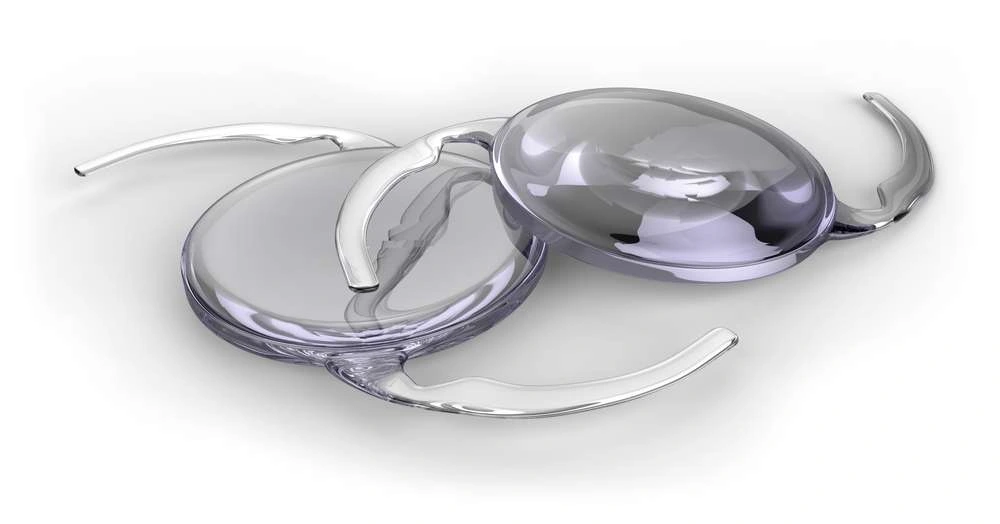If you’re considering cataract surgery and want a reliable way to improve your vision while reducing your dependence on glasses, toric lenses might be the best option for you. These lenses are great for fixing astigmatism and improving your vision after surgery.
In this blog, we’ll explore how effective they are, how much they cost, and the pros and cons of choosing them. So, join us to find out if toric lenses are the right choice for your cataract surgery.
Contents
Understanding Toric Lenses for Cataract Surgery
Toric lenses are special types of intraocular lenses (IOLs) used in cataract surgery, designed specifically to correct astigmatism. Astigmatism happens when the cornea, the clear front cover of the eye, is not perfectly round. This can make your vision blurry or distorted, and toric lenses help fix that.
What Makes Toric Lenses Different?
- Shape and Design: Toric lenses are shaped differently from regular IOLs. They have different powers in different meridians of the lens to compensate for the uneven curvature of the cornea that characterizes astigmatism.
- Placement in the Eye: During surgery, it’s crucial for toric lenses to be positioned just right to align with your astigmatism. This precise alignment helps to sharpen your vision.
- Stability: Toric lenses have built-in features to keep them from turning in your eye. This stability is key to maintaining clear vision, as the correct angle of the lens needs to be maintained.
In short, toric lenses are tailored to fix the specific problems caused by astigmatism during cataract surgery, making them an excellent choice for those looking to get the most out of their procedure and see clearly again.
Why Toric Lenses May Be the Best Option for You
If you are preparing for cataract surgery and have astigmatism, toric lenses might be the ideal solution for you. These specially designed lenses offer several advantages that make them particularly beneficial for individuals looking to achieve clear post-surgical vision while addressing astigmatism. Here’s why toric lenses may be the best option for you:
- Targeted Astigmatism Correction
- Reduced Dependence on Glasses
- High Precision and Effectiveness
- Customized for Your Eyes
- Long-Term Visual Clarity
Types of Toric Lenses and Their Cost

Toric lenses come in different types to suit various vision needs and preferences. Here’s a breakdown of the common types of toric lenses and their costs:
Toric Monofocal Lenses
- Cost: ₹35,000 – ₹45,000
- Best For: Individuals who want clear distance vision. These lenses are great if you’re okay with wearing reading glasses for close-up tasks like reading or sewing.
Toric Multifocal Lenses
- Cost: ₹65,000 – ₹1,00,000
- Best For: Those looking for an all-in-one vision solution. These lenses help you see clearly at all distances—near, intermediate, and far.
Toric Extended Depth of Focus (EDOF) Lenses
- Cost: Starting from ₹65,000
- Best For: Individuals who need sharp vision for distance and intermediate tasks but don’t mind using reading glasses occasionally for very close activities. They are perfect for those who need clear vision for daily activities such as driving and using digital devices but can manage small tasks with additional glasses.
Choosing the right type of toric lens depends on your daily activities, lifestyle, and how much you’re willing to spend. Each lens type offers specific benefits, so consider what’s most important for your vision needs when making your decision.

Your Help Can Make a Difference!
Cataract Is The Biggest Reason For Blindness!
With Every Donation, You’re Gifting a Cataract Surgery To Someone in Need!
Pros and Cons of Choosing Toric Lenses
Toric lenses are a popular choice for correcting astigmatism during cataract surgery, but like any medical decision, choosing them comes with its own set of advantages and potential drawbacks. Here’s a balanced look at the pros and cons of opting for toric lenses:
Pros of Toric Lenses
1. Enhanced Visual Clarity: Toric lenses are specifically designed to correct astigmatism, which can significantly improve visual clarity and reduce the need for corrective eyewear post-surgery.
2. Customized Solution: Each toric lens is custom-made to align with the individual’s specific astigmatism, ensuring more precise vision correction.
3. Long-Term Benefits: By effectively addressing astigmatism, toric lenses can offer a more permanent solution to vision problems associated with this condition, reducing the likelihood of needing further vision correction in the future.
4. Improved Quality of Life: Many patients experience a dramatic improvement in their quality of life with better vision, enabling them to engage more comfortably in daily activities such as driving and reading.
Cons of Toric Lenses
1. Higher Costs: Toric lenses are generally more expensive than standard lenses used in cataract surgery. This cost can be a significant factor for some patients when deciding on their lens type.
2. Precise Placement Requirement: For toric lenses to function correctly, they must be placed with exact precision during surgery. If the lens rotates or is misaligned, it can lead to less than optimal results, potentially requiring additional adjustments or another surgery.
3. Limited Correction: While toric lenses correct astigmatism, they may not entirely eliminate the need for reading glasses, especially if the patient opts for a toric monofocal lens.
Potential Drawbacks Post-Surgery
Post-Surgical Rotation: One issue that can arise with toric lenses is the possibility of the lens rotating post-surgery. If a toric lens rotates, it can partially or fully negate its astigmatism-correcting effect, potentially blurring vision. This might require follow-up procedures to reposition or replace the lens.
Sensitivity to Lens Misalignment: Due to their design, even slight misalignments can significantly impact the effectiveness of toric lenses. This sensitivity requires very accurate placement during surgery and careful monitoring afterward.
In summary, while toric lenses offer excellent benefits for those with astigmatism undergoing cataract surgery, the decision to opt for these lenses should be made after considering both the potential for pros and cons.
Side Effects of a Toric Lens Implant
- Lens Misalignment: If the lens shifts from its intended position, it can lead to suboptimal astigmatic correction and blurred vision. This might require additional procedures to reposition the lens.
- Residual Astigmatism: Even with precise alignment, some patients may still experience residual astigmatism because the lens may not fully correct the irregular curvature of the cornea or because of post-surgical changes in the eye.
- Glare and Halos: This can be due to the different way light passes through the toric lens compared to a natural lens.
- Postoperative Inflammation: As with any type of eye surgery, there is a risk of inflammation after implanting a toric lens.
- Infection: Though rare, there is always a risk of infection following surgery, which can be serious if not treated promptly.
- PCO (Posterior Capsule Opacification): While this can occur with any type of lens implant, PCO, often referred to as a “secondary cataract,” involves clouding of the lens capsule after surgery.
- Visual Distortions: Some patients might experience slight visual distortions as they adjust to the new lens, especially if there was significant astigmatism correction.
Your Small Donation Can Bring Relief
As cataract rates rise, more people are becoming blind because they can’t afford surgery. Imagine giving someone the ability to see—your donation makes this possible. For many, this surgery means more than just seeing; it means getting their life back.
Join Hands with EyeMantra Charitable
Please make a difference today. Click on the Donate Now button and start helping. With your support, the Eye Mantra Foundation can continue to provide crucial eye care and restore vision for those in need. Let’s work together to bring light and hope to more lives.
